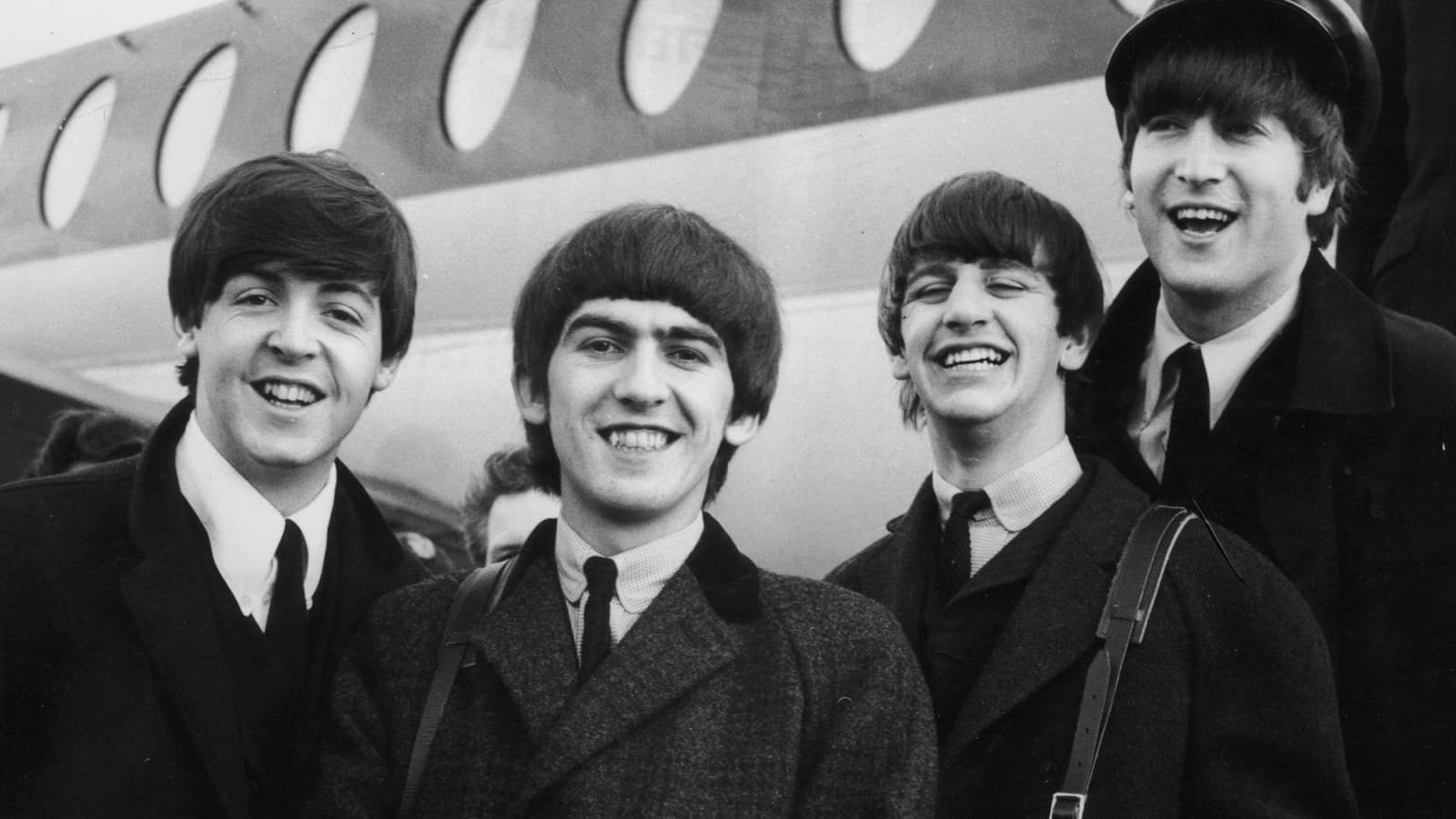
The Beatles were an English rock band, formed in Liverpool in 1960, that comprised John Lennon, Paul McCartney, George Harrison and Ringo Starr. They are regarded as the most influential band of all time[1] and were integral to the development of 1960s counterculture and popular music’s recognition as an art form.[2] Rooted in skiffle, beat, and 1950s rock ‘n’ roll, their sound incorporated elements of classical music and traditional pop in innovative ways; the band also explored music styles ranging from folk and Indian music to psychedelia and hard rock. As pioneers in recording, songwriting and artistic presentation, the Beatles revolutionised many aspects of the music industry and were often publicized as leaders of the era’s youth and sociocultural movements.
Here is our list of ranked The Beatles albums. Enjoy!
1. The Beatles: The White Album
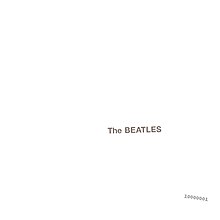
The Beatles, also known colloquially as the White Album, is the ninth studio album and only double album by the English rock band the Beatles, released on 22 November 1968. Featuring a plain white sleeve, the cover contains no graphics or text other than the band's name embossed.[a] This was intended as a direct contrast to the vivid cover artwork of the band's previous LP Sgt. Pepper's Lonely Hearts Club Band. The Beatles is recognised for its fragmentary style and diverse range of genres, including folk, British blues, ska, music hall, pre-heavy metal and the avant-garde. It has since been viewed by some critics as a postmodern work, as well as among the greatest albums of all time.[1]
2. Abbey Road
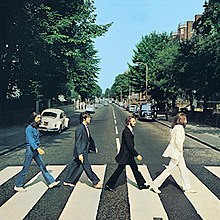
Abbey Road is the 11th studio album released by the English rock band the Beatles. It is the last album the group started recording,[1] although Let It Be was the last album completed before the band's dissolution in April 1970.[2] It was mostly recorded in April, July and August 1969, and was released on 26 September 1969 in the United Kingdom, and 1 October 1969 in the United States, reaching number one in both countries. A double A-side single from the album, "Something" / "Come Together" was released in October, which also topped the charts in the US.
3. Let It Be
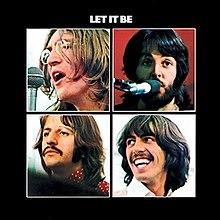
Let It Be is the 12th and final studio album by the English rock band the Beatles. It was released on 8 May 1970, almost a month after the group's break-up, in tandem with the documentary of the same name. Concerned about recent friction within the band, Paul McCartney had conceived the project as an attempt to reinvigorate the group by returning to simpler rock 'n' roll configurations.[2] The album topped charts in many countries, including both the UK and the US, but the critical response was generally unfavourable, and Let It Be came to be regarded as one of the most controversial rock albums in history
4. Revolver
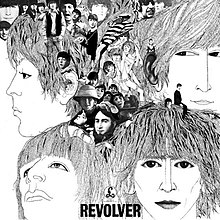
Revolver is the seventh studio album by the English rock band the Beatles. It was released on 5 August 1966, accompanied by the double A-side single "Eleanor Rigby" / "Yellow Submarine". The album was the Beatles' final recording project before their retirement as live performers and marked the group's most overt use of studio technology to date, building on the advances of their late 1965 release Rubber Soul. It has since become regarded as one of the greatest and most innovative albums in the history of popular music, with recognition centred on its range of musical styles, diverse sounds, and lyrical content.
5. Sgt. Pepper's Lonely Hearts Club Band

Sgt. Pepper's Lonely Hearts Club Band is the eighth studio album by the English rock band the Beatles. Released on 26 May 1967,[nb 1] Sgt. Pepper is regarded by musicologists as an early concept album that advanced the roles of sound composition, extended form, psychedelic imagery, record sleeves, and the producer in popular music. The album had an immediate cross-generational impact and was associated with numerous touchstones of the era's youth culture, such as fashion, drugs, mysticism, and a sense of optimism and empowerment. It is considered one of the first art rock LPs, a progenitor to progressive rock, and the start of the album era. Its release was a defining moment in 1960s pop culture, heralding the Summer of Love, while the album's reception achieved full cultural legitimisation for pop music and recognition for the medium as a genuine art form.
6. Rubber Soul
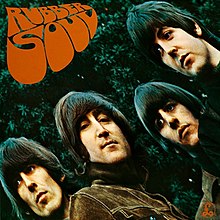
Rubber Soul is the sixth studio album by the English rock band the Beatles. It was released on 3 December 1965 in the United Kingdom, on EMI's Parlophone label, accompanied by the non-album double A-side single "Day Tripper" / "We Can Work It Out". The original North American release, issued by Capitol Records, contains ten of the fourteen songs and two tracks withheld from the band's Help! album. Rubber Soul was met with a highly favourable critical response and topped sales charts in Britain and the United States for several weeks.
7. Magical Mystery Tour
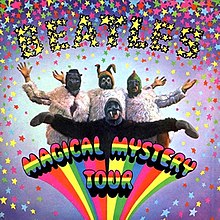
Magical Mystery Tour is a record by the English rock band the Beatles that was released as a double EP in the United Kingdom and an LP in the United States. It includes the soundtrack to the 1967 television film of the same name. The EP was issued in the UK on 8 December 1967 on the Parlophone label, while the Capitol Records LP release in the US and Canada occurred on 27 November and features an additional five songs that were originally released as singles that year. In 1976, Parlophone released the eleven-track LP in the UK.
8. A Hard Day's Night

A Hard Day's Night is the third studio album by the English rock band the Beatles, released on 10 July 1964 by Parlophone, with side one containing songs from the soundtrack to their film of the same name. The American version of the album was released two weeks earlier, on 26 June 1964 by United Artists Records, with a different track listing that included selections from George Martin's film score. In contrast to the Beatles' first two albums, all 13 tracks on A Hard Day's Night were written by John Lennon and Paul McCartney, showcasing the development of their songwriting partnership.
9. Help!
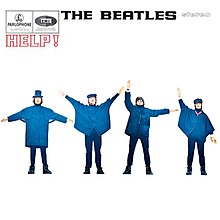
Help! is the fifth studio album by the English rock band the Beatles and the soundtrack to their film of the same name. It was released on 6 August 1965. Seven of the fourteen songs, including the singles "Help!" and "Ticket to Ride", appeared in the film and take up the first side of the vinyl album. The second side includes "Yesterday", the most-covered song ever written.[3] The album was met with favourable critical reviews and topped the Australian, German, UK and US charts.
10. Something New
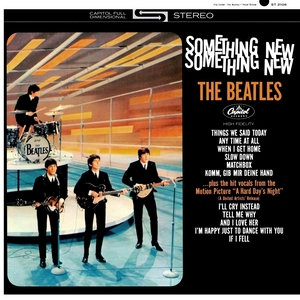
The album is the third Capitol LP release and fifth American album release overall by the band, following the United Artists release of A Hard Day's Night. The album includes eight songs from the original British release of A Hard Day's Night, as well as the tracks "Slow Down" and "Matchbox" from the Long Tall Sally EP and the German-language version of "I Want to Hold Your Hand". The mono version also featured the extended single mix of "I'll Cry Instead", while stereo editions included a shorter edit from the UK release of A Hard Day's Night.
11. The Beatles' Second Album
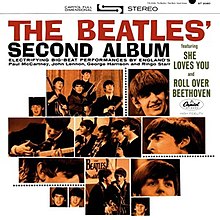
The Beatles' Second Album is the second Capitol Records album by the English rock band the Beatles, and their third album released in the United States including Introducing... The Beatles, which was issued three months earlier by Vee-Jay Records. Following its release in April 1964, The Beatles' Second Album replaced Meet the Beatles! at number 1 on the Billboard Top LPs chart in the US. The album was compiled mostly from leftover tracks from the UK album With the Beatles and Long Tall Sally EP, which are predominantly rock and roll and R&B covers, and rounded out with several Lennon-McCartney-penned non-album b-sides and the hit single "She Loves You". Among critics, it is considered the band's purest rock and roll album and praised for its soulful takes on both contemporary black music hits and original material.
12. Meet the Beatles!

Meet the Beatles! is a studio album by the English rock band the Beatles, released as their second album in the United States. It was the group's first American album to be issued by Capitol Records, on 20 January 1964 in both mono and stereo formats. It topped the popular album chart on 15 February 1964 and remained at number one for eleven weeks before being replaced by The Beatles' Second Album. The cover featured Robert Freeman's iconic portrait of the Beatles used in the United Kingdom for With the Beatles, with a blue tint added to the original stark black-and-white photograph.
13. Introducing... The Beatles
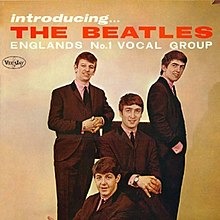
Introducing... The Beatles is the first studio album released by the English rock band the Beatles in the United States. Originally scheduled for a July 1963 release, the LP came out on 10 January 1964, on Vee-Jay Records, ten days before Capitol's Meet the Beatles!. The latter album, however, entered the U.S. album chart one week before the former. Consequently, when Meet The Beatles! peaked at No. 1 for eleven consecutive weeks, Introducing...The Beatles stalled at No. 2 where it remained for nine consecutive weeks. It was the subject of much legal wrangling, but ultimately, Vee-Jay was permitted to sell the album until late 1964, by which time it had sold more than 1.3 million copies.[3] On 24 July 2014 the album was certified gold and platinum by the RIAA.
14. Beatles '65
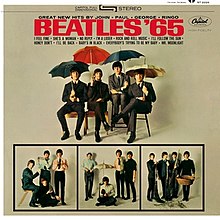
Beatles '65 is an album by the English rock band the Beatles that was issued in the United States and Canada in December 1964. Released as the North American alternative to Beatles for Sale, it was the band's fifth studio album culled by Capitol Records in the US from the Beatles' EMI releases. The LP was also issued in West Germany on the Odeon label.
15. Beatles VI
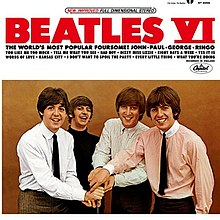
Beatles VI is the seventh Capitol Records studio album by the English rock band the Beatles in the United States and Canada (including The Beatles' Story). It was the ninth album released into that market in less than one and a half years (Vee-Jay Records and United Artists Records also released one album each during that period).[5] The LP was released in both mono and stereo versions.
16. Yesterday and Today
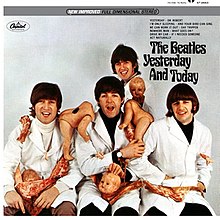
Yesterday and Today (also rendered as "Yesterday" ... and Today in part of the original packaging)[3] is a studio album by the English rock band the Beatles. Released in the United States and Canada in June 1966, it was their ninth album issued on Capitol Records and twelfth American release overall. Typical of the Beatles' North American discography until 1967, the album contains songs that Capitol had withheld from its configurations of the band's recent EMI albums, along with songs that the group had released elsewhere on non-album singles. Among its 11 tracks are songs from the EMI albums Help! and Rubber Soul, and three new 1966 recordings that would appear on Revolver in countries outside North America.
17. Yellow Submarine
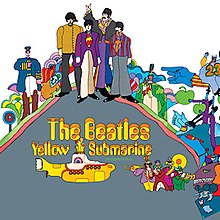
Yellow Submarine is the tenth studio album by English rock band the Beatles, released on 13 January 1969 in the United States and on 17 January in the United Kingdom. It was issued as the soundtrack to the animated film of the same name, which premiered in London in July 1968. The album contains six songs by the Beatles, including four new songs and the previously released "Yellow Submarine" and "All You Need Is Love". The remainder of the album is a re-recording of the film's orchestral soundtrack by the band's producer, George Martin.
